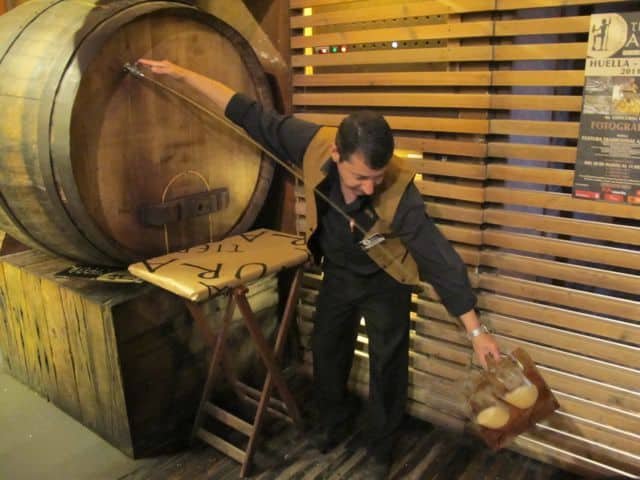Basque Beverages
by Tim Powers
Whether it’s fun and spritzy wines or unfiltered and funky hard ciders, the Basque Country has been producing incredible fermented beverages for thousands of years. The modern Basque region straddles the French and Spanish border, and has long struggled to be recognized as its own sovereign nation. Roman soldiers wrote disparagingly about the ‘savage people of the mountains’ who would drink fermented apple juice, an anathema to the wine drinking Romans, who then planted vines that were adapted and perfected by the Basque. Although persecuted by numerous subsequent invaders, the Basque people, or ‘Euskaldunak’, have persevered while preserving and expanding their wine and cider making traditions.
Although typically associated with white wines, the Basque Country traditionally has produced red wines, predominantly from the native Hondarrabi Beltza grape. After the phylloxera epidemic destroyed the majority of their vineyards in the early 1900s Basque winemakers decided to plant white grapes so as not to compete with the Tempranillo-based reds being made in the region of Rioja to the south. The native white grape, Hondarrabi Zuri (zuri meaning ‘white’) dominates production in the contemporary markets; its bright, citrusy flavors and rippingly high acidity captivate the American audience.
Basque wines were first imported into the United States in 1989, the same year that the Basque Country secured its first legal appellation, D.O.P. Getariako Txakolina. Txakoli (or txakolina, both meaning ‘Homemade Wine’) took the US market by storm, as a number of Michelin-starred restaurants in the Basque regions, and a growing number of young somms who were passionate about underrepresented grape varieties, popularized the spritzy white wine.
Grapes grown in the Basque Country face a number of challenges since the Bay of Biscay to the north creates a climate that is cold, windy, and extremely damp. Heavy rain is a common occurrence, and Basque grape growers have to be cognizant of mold and mildew, ever-present in the humid conditions. Basque grapevines are grown on elevated trellises, called parra, which are similar to the pergola systems used in the Rias Baixas region of Galician Spain. Standing at over six feet tall at times this technique allows the grapes to stay dry and mold-free while the grapes slowly ripen in the cool weather.
The history and perseverance of wine and cider making in the Basque Country reflect the resilience and ingenuity of its people. These harsh conditions, both climatic and sociopolitical, have allowed the Basque Country to flourish as a burgeoning wine region, with new wineries being started each year and innovative winemaking techniques developing in order to expand their opportunities while staying true to their past.
Brilliant Beverages to Ask for:
Txakoli White - As mentioned earlier, this wine is light, bright, and refreshing. Low in alcohol and high in acidity, the grape juice is fermented at a low temperature to preserve freshness, and blanketed during fermentation to trap the CO2, resulting in a slight effervescence. Wines are meant to be drunk young, and pair perfectly with omelets, white fish, or (as is Basque tradition) red meat served rare.
Txakoli Rosé - A relatively new style of Basque wine, this style of wine was created within the last 15 years, and over 75% of what is made is exported to the United States. The wine is a 50/50 blend of Hondarrabi Beltza and Hondarrabi Zuri and it is just as crisp as Txakoli white; it has a soft pink color, fruity strawberry notes, and 4-5 g/l of residual sugar to balance out the bracing acidity.
Sagardoa - Basque cider didn’t stop when the Romans invaded! Similar to Txakoli, Basque cider is brutally high in acid, and most often unfiltered to preserve its funky earth, apple, and yeast-driven flavors. The cider is poured from a great height, either from a bottle or straight from the barrel in order to aerate and agitate the wine and is immediately consumed after pouring to ensure the cider is fresh and delicious. Look for bottles with a red capsule on the top to signify it came from the D.O. Euskal, one of the world’s few apple cider appellations.

